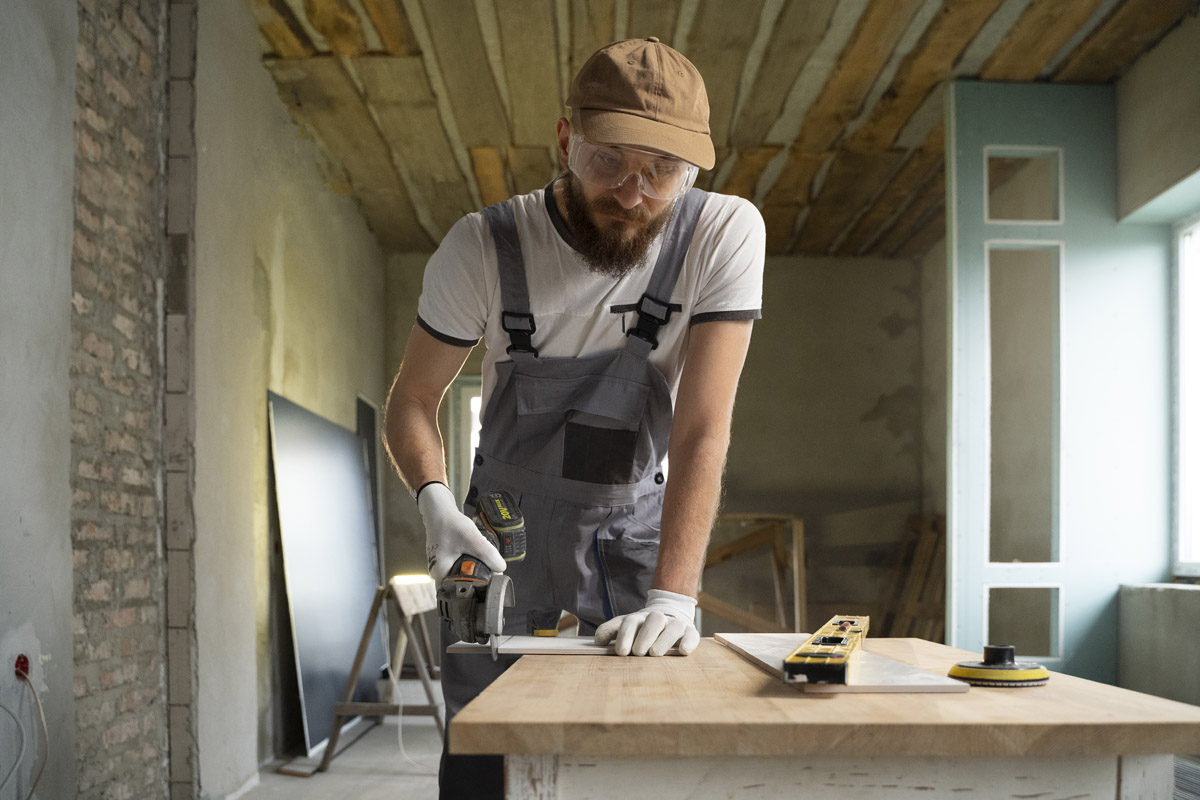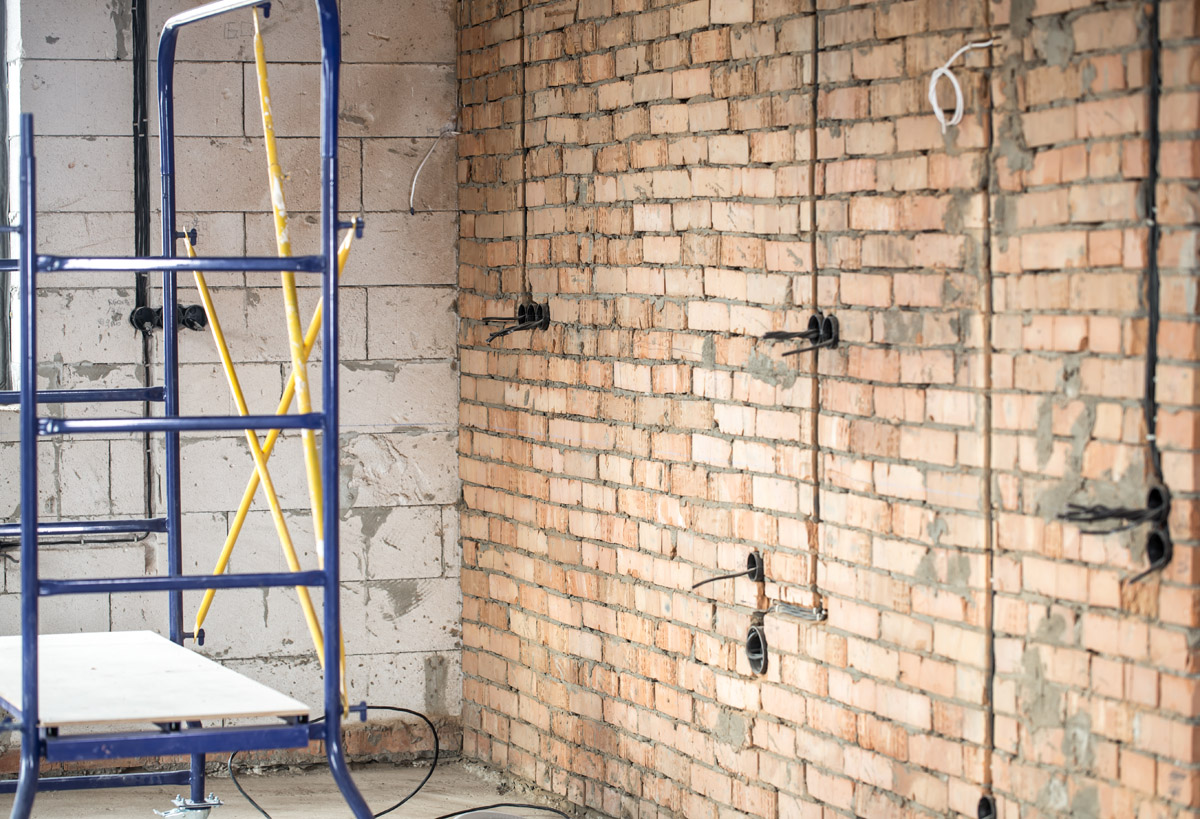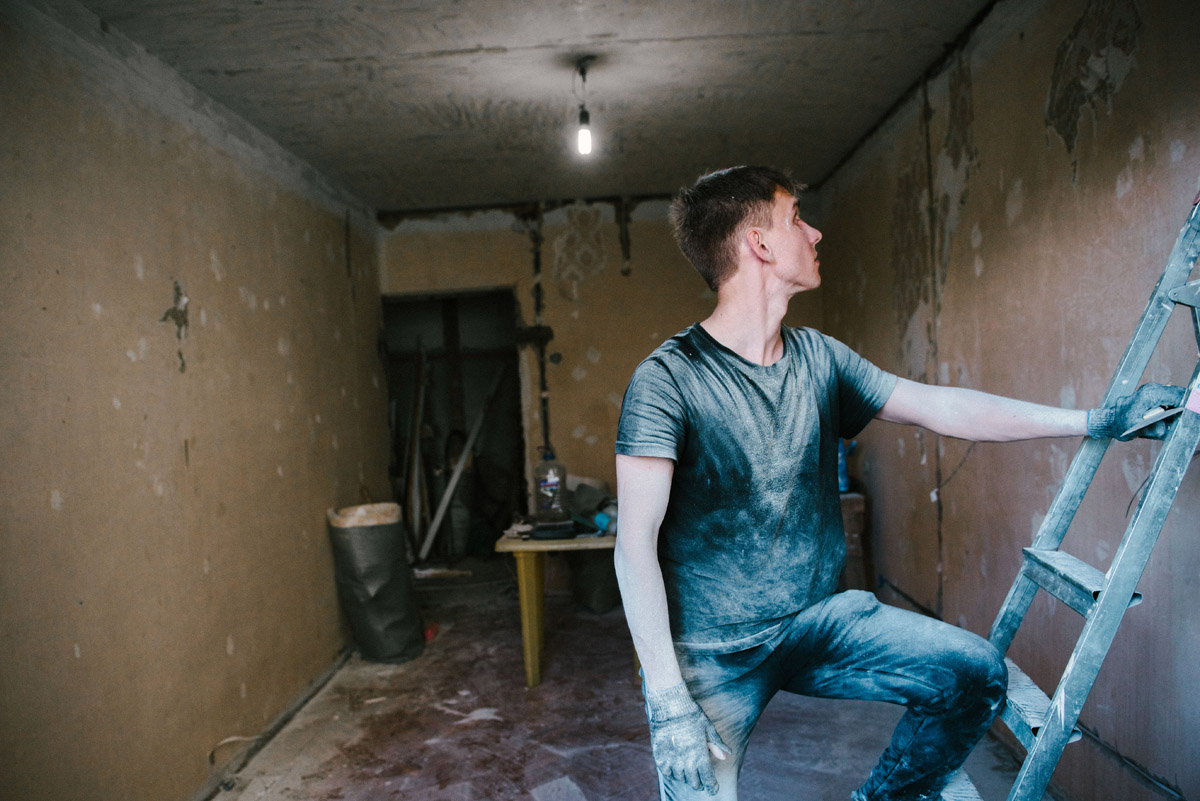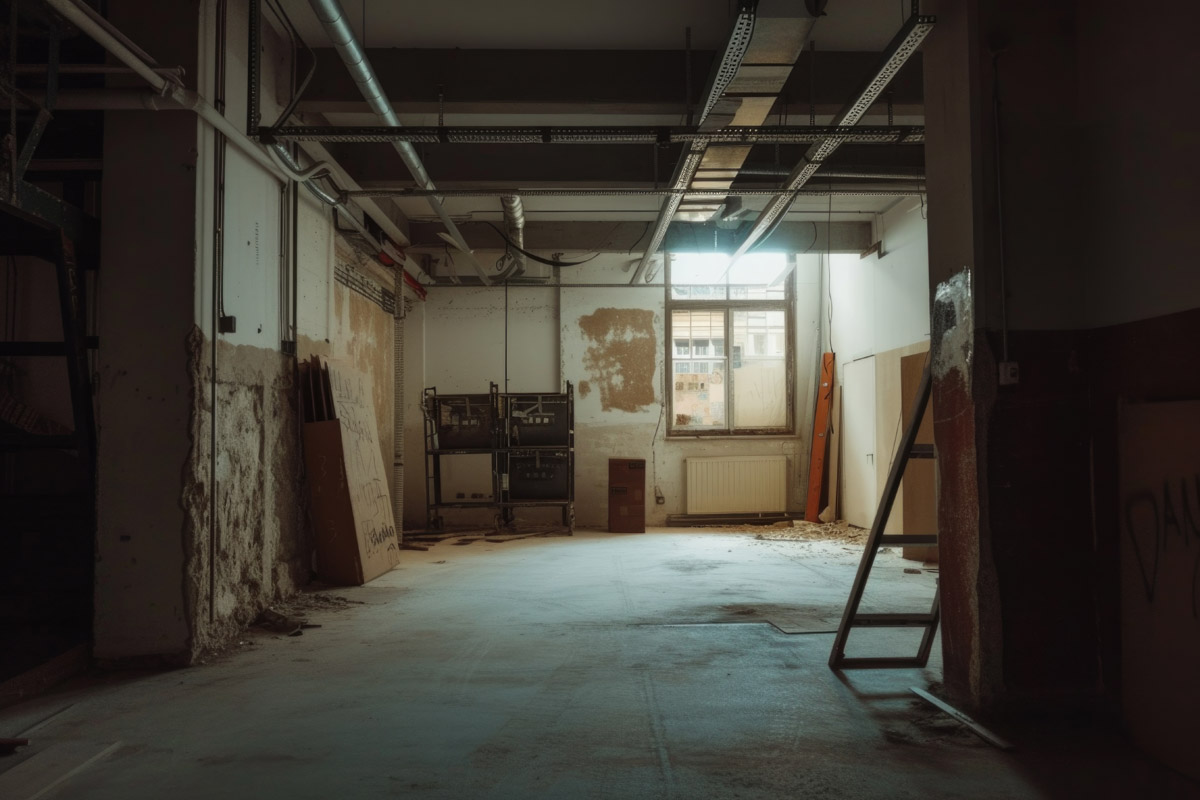Published: October 9th, 2025
A basement is considered a technical, unnecessary room. But it can either add an additional room to the house for residents or increase the property’s value when selling. Professional basement renovation is carried out by specialists from Artos in the city of Charlotte. They shared useful information about the cost of such a process.
How much does basement reconstruction cost?
Several factors affect the price of updating or remodeling a basement area. Let’s look at each one below.
Cost by basement size
The larger the area, the more expensive the renovation. Finishing a basement with an area of 1,000 square feet costs from 7,000 to 23,000 US dollars. These are the average rates across the country. Accordingly, renovating one square foot costs $7–23, depending on the finishing materials used, the volume and complexity of the work, and the specific design project.
Cost by basement type
If the basement is unfinished, renovating it will be more expensive than finishing a room that already has a rough finish or partial cosmetic work. This is because in an unfinished basement area it is necessary to plan insulation, cover ducts or pipes, lay or improve utilities, and install flooring over concrete.
If the basement is partially finished, it can be made suitable for living or household needs. Here you can install a bathroom, cover the floor with drywall, and connect the room to the existing building systems (ventilation, plumbing, sewage, air conditioning). This will require considerable expenses, but they will be less than the cost of renovation from scratch. You can also get an additional living room or a space for sports, work, or storage.

Permit cost
If the renovation requires changes to the structure of the room or the house’s utilities, permits are needed. They are related to the need to extend electrical wiring and plumbing lines, as well as to possibly adjust the performance of the air conditioning, ventilation, and heating systems. The average cost of obtaining permits is $1,200–2,000. The price includes inspection fees to confirm that the basement complies with current building codes.
Important! The more extensive the changes to the engineering systems, the more permits are required and the higher their cost.
Labor costs
Professional contractor services account for 40% of the project cost. For full renovation or reconstruction work, it is necessary to hire several specialized professionals — a plumber, electrician, and painter. If you hire them separately, as well as hire professionals to oversee the project, the costs will be 10–20% higher than paying for the multi-specialty services of one contracting company. A designer consultation costs $50–200 per hour, depending on qualifications and experience.
What are the additional costs for finishing a basement?
Additional costs are almost inevitable, and their size depends on the scope of work and the initial condition of the room. Let’s look at possible expenses:
Waterproofing. It costs $1,900–6,500. It becomes expensive if water penetration into the room is detected, which sometimes indicates problems with the foundation or walls. All discovered cracks are sealed, and a waterproof sealant is applied.
Sewer equipment – sump pump installation. This costs $600–1,600. The pump is necessary if there are drainage problems on the site, which often occur in humid climates with frequent rainfall.
Framing. This costs $700–1,400. Wooden frame structures serve as supports for ceilings and walls. The cost of framing depends on the number of planned partitions.
Insulation. The basement owner will spend $1,500–4,000. Wall insulation is important because it helps maintain comfortable indoor temperatures. The most expensive insulation material is fiberglass, which also requires spray foam or blown-in insulation. The larger the area, the more expensive the insulation.
Flooring. Installation costs $2,000–12,000. Affordable options include laminate and vinyl materials, which cost $3–8 per square foot (including installation). Installing parquet flooring costs about $28 per square foot.
Electrical work. Costs $1,300–12,000. To meet building codes, electrical installation should only be done by licensed electricians. Expenses depend on the amount of wiring, the number of outlets, and the number of devices that need to be connected.
Plumbing installation. Costs $2,500–15,000. The work may require major changes to the plumbing and heating systems. The maximum amount is spent on installing a toilet and bathroom.
HVAC formation or upgrade. Costs $2,000–11,000. If the house already has heating, ventilation, and air conditioning, the system may only need additional ducts. If the system’s capacity is insufficient, a separate unit must be purchased for the basement.
Emergency exit installation. Costs $2,500–5,500. This is important if the basement is being converted into a living room, such as a bedroom. For safety, at least one emergency window of standard size must be installed. The installation may be labor-intensive and costly.
Ceiling finishing. Costs $1,600–3,600. Specialists charge $2–4.5 per square foot. Many basement owners choose suspended ceilings to hide wiring and pipes. The final cost depends on the ceiling area.
Drywall purchase. Costs $800–3,000. This material is sometimes used as a base for ceiling structures, partitions, or walls.
Painting surfaces. Costs $1,200–3,500, depending on what needs painting — walls, pipes, floors, ceilings, or furniture facades.
Other costs. Foundation repair ($2,500–7,000), removal of hazardous materials such as asbestos or lead paint, mold remediation, and other unforeseen work.

Average basement renovation cost
The price range is wide because many factors affect the final amount: the type of room, area, current condition, and purpose of renovation. On average, reconstruction or full finishing costs $40,000–145,000. The minimum is basic cosmetic repair. The maximum is large-scale reconstruction based on a designer project using luxury materials. If complex remodeling or installation of additional utilities is planned, the total cost may rise to $175,000.
What is legally considered a finished basement?
To be officially recognized as a living space, a remodeled or renovated basement must meet the construction requirements of the specific state. The rules differ, but there are general standards:
Ceiling height. It must be at least 7 feet. If the height is lower, the basement cannot be legally classified as living space. If the height is insufficient, the floor can be lowered by 12–24 inches. This costs $40,000–90,000. However, the International Residential Code provides some exceptions for ducts and beams, which can help avoid major work.
Emergency exit according to IRC fire safety standards. The window should be located no higher than 4 feet 4 inches from the floor. Width — at least 20 inches, height — at least 24 inches.
Planning basement renovation
When preparing the plan, take the following steps:
- Prepare the space — clean and remove obstacles.
- Identify possible problems — humidity, water leaks, mold, hazardous materials.
- Plan the budget, taking into account the scope and type of work and necessary materials. It is important to include a reserve fund for unforeseen expenses.
- Choose a contractor. Contact several companies and compare their services, experience, staff qualifications, portfolios, and prices.
Basement finishing and reconstruction: what’s the difference?
Finishing is work aimed at turning the space into a livable room. The process includes insulation, framing (if needed), installation of utilities, flooring, and finishing walls and ceilings. The result is a comfortable space with a pleasant microclimate.
Reconstruction means remodeling with major changes — building new walls or removing old partitions, connecting appliances, installing furniture. After reconstruction, the basement becomes a fully functional room, such as a guest room. The work is labor-intensive and expensive but allows changing the structure and purpose of the area.
What are the benefits of finishing a basement?
Advantages:
- Increased usable area. A finished basement becomes an extra room for sports, relaxation, or work.
- Property profitability. If the basement is officially classified as living space, it adds to the total area of the house, increasing its value for sale or rent.
- Income opportunity. A basement with a bathroom and kitchen can be rented out.
- Energy efficiency. An uninsulated basement causes heat loss and high humidity, requiring the HVAC system to work harder. Waterproofing and insulation improve energy efficiency and reduce utility costs.
Safety. In areas where the soil contains uranium, radon can enter through lower floors. This gas seeps through basement cracks and increases cancer risk. Finishing the basement eliminates entry points for radon and mold, making the home safer.

Additional costs to consider during basement reconstruction
Additional expenses include:
- Ceiling and wall insulation. Improves energy efficiency and comfort. Costs $1.5–5 per sq. ft., total $1,400–6,300.
- Plumbing — bathtub and toilet, additional pipes. Costs $2,500–5,000.
- Repairing or restoring damaged foundation. Costs $2,500–7,000.
- Mold removal. Identifying mold sources, removing affected surfaces, and treating with antifungal agents costs $500–3,000.
- Asbestos removal. Removing asbestos-containing materials requires certified specialists; costs about $2,000.
Two points deserve special attention.
Permits and inspections
If major renovation is planned, construction permits are required to ensure compliance with codes and structural integrity. The fee system depends on the municipality. On average, building departments charge $25–1,000 for permits for projects under $50,000, and $20–1,000 for projects above that. Separate permits may be needed for fire safety, electrical, or plumbing work.
Furniture and finishing
Lighting, furniture installation, and decor guarantee comfort and aesthetics. To make the room functional and pleasant, the budget should include furniture, lighting fixtures, and decorative accessories. Furniture, decor, and lighting depend on the room’s purpose. For example, a bedroom requires a bed, storage cabinet, general lighting, and cozy elements (soft rug, wall paintings).
Popular basement renovation ideas
We offer popular and creative basement design ideas:
- Home office. A quiet, comfortable, well-organized workspace for remote work.
- Guest suite. For hosting guests or letting relatives and friends stay overnight.
- Game room or entertainment area. Includes a home theater, karaoke, sofa, chairs, and a table for board games. You can also add a gaming console or free space for activities like dancing.
- Gym. Equipped with exercise machines, sports equipment, and open workout space.
- Creative area — for painting, singing, composing music, or reading.
- Lounge area with comfortable armchairs and a bar.
- Sauna or steam bath for relaxation and home spa treatments.
- Fireplace area. Fire and crackling logs create a cozy atmosphere. You can install a wood-burning fireplace (with a permit) or an electric one with flame and sound imitation.
- Bedroom. Any family member can sleep here.

Ways to save on basement renovation
Saving tips:
- Do not violate building codes. Ignoring them may save money initially but cause costly corrections later.
- Choose mid-priced materials. They are cheaper than premium ones but often just as durable.
- Take care of insulation early. Sealing leaks prevents water damage and deterioration.
- Install suspended ceilings. They look neat, hide ducts and pipes, and provide access to utilities. You can use drywall sheets and paint or decorative panels.
- Use vinyl tile for flooring. Modern vinyl imitates stone and wood beautifully. It’s affordable, durable, and waterproof.
- Use existing utilities. Place the bathroom where plumbing access already exists to avoid extra pipework.
Leave a storage area unfinished. It’s fine to keep it rough since it’s only for storing seasonal items.
